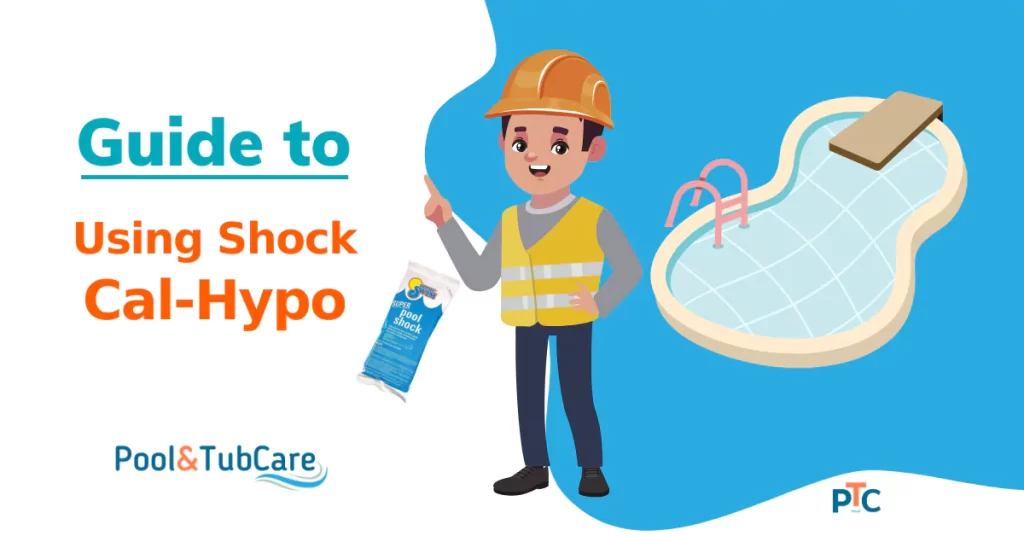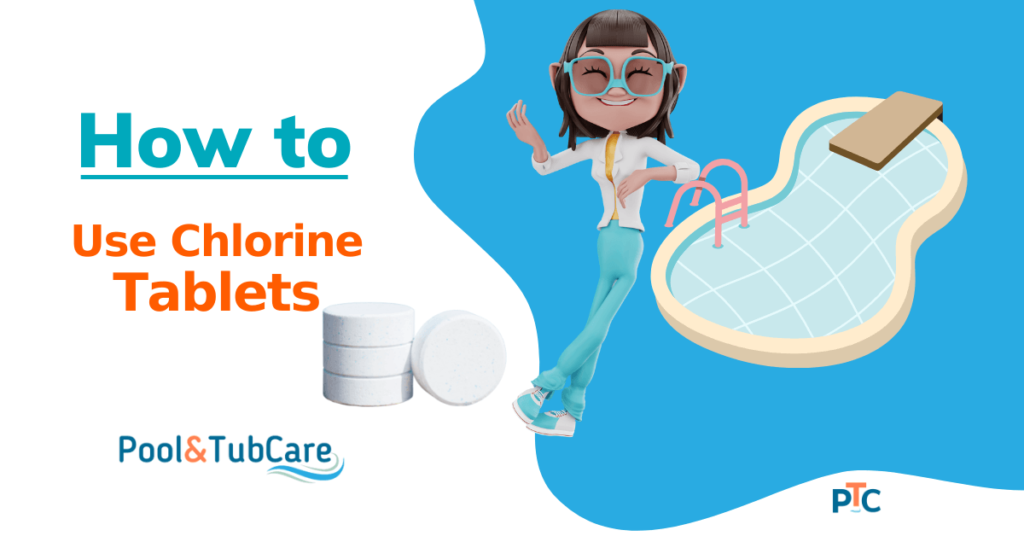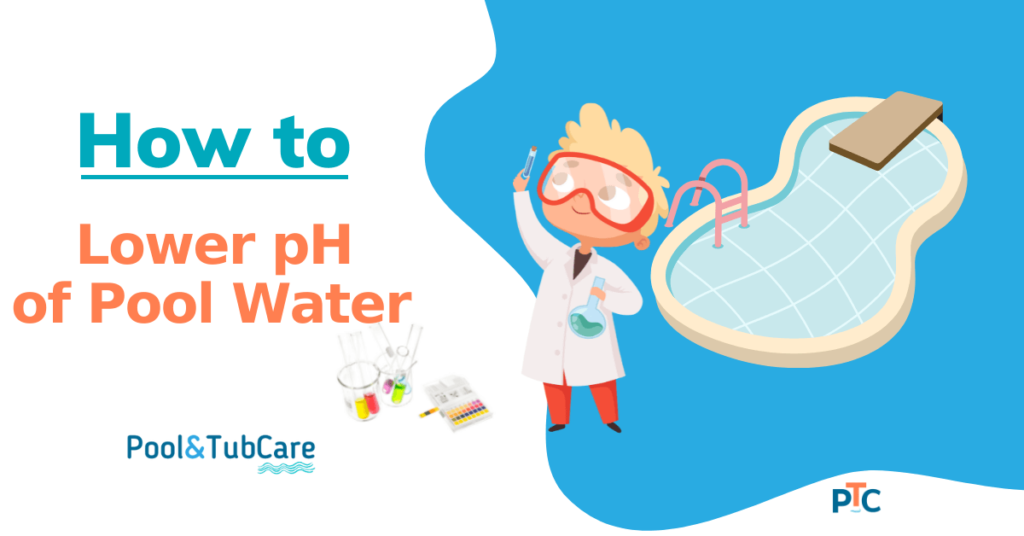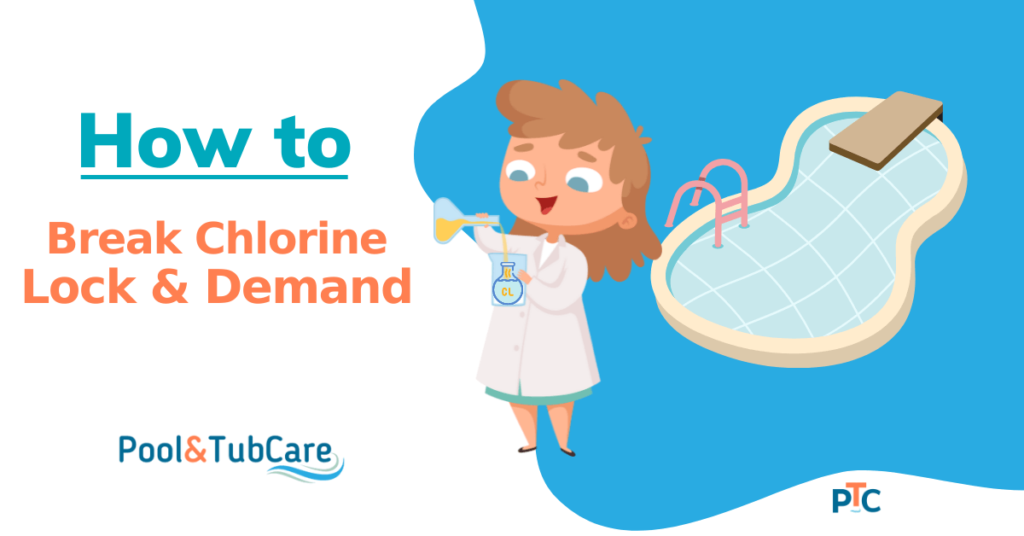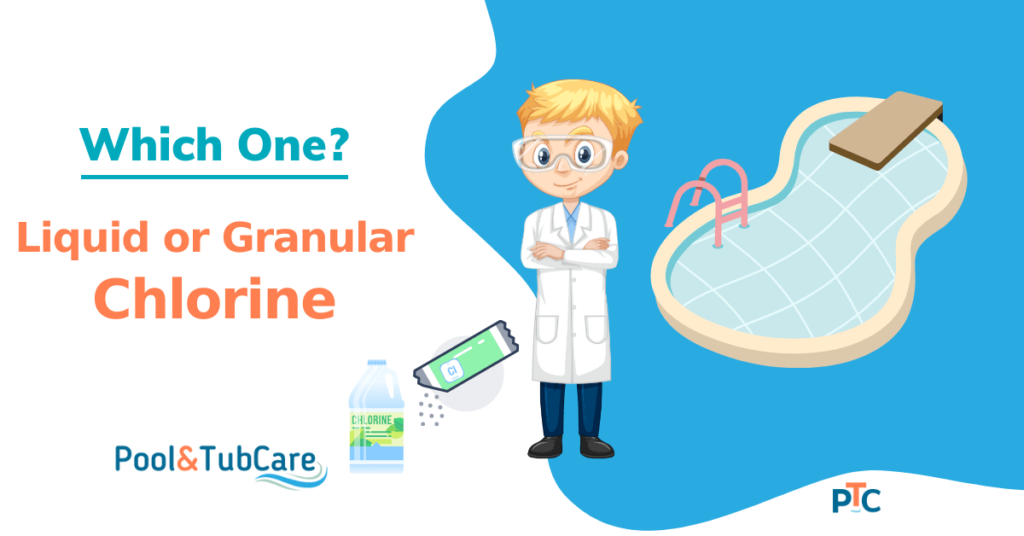Every pool owner who manages it knows how important it is to shock your pool and to do it with the right chemical.
Calcium hypochlorite (cal-hypo) is one of the most potent and economical shock available for pool owners.
If you are already using it, Great, I will tell you why it is the right choice most of the time and when you should avoid using it.
For the pool owners who are still not sure which pool shock to use, I will tell you why calcium hypochlorite might be the answer to your pool problems.
Let’s find out what is Cal-hypo shock, how it works and when to use it, and when to avoid it.
What is Calcium Hypochlorite Shock
It is an inorganic chemical made by mixing lime with carbon chlorine gas and contains 65 to 73% chlorine.
Calcium hypochlorite has been used for a long to clean water.
It works effectively and is very affordable at the same time, making it a shock chemical of choice for the masses.
It comes in powdered/ granular form and is easy to store in bags.
This is an unstabilized form of chlorine, which means it does not come mixed with cyanuric acid, making it perfect for shocking the pools.
But you need to use it in the evening as the sun can easily reduce its effectivity by breaking down chlorine.
When it is added to the water, it releases chlorine (hypochlorous ions) which keeps your water clean by killing almost all the pathogens present there that may cause severe diseases.
Chlorine disrupts/breaks the cell wall of bacteria and also interferes with other internal mechanisms, causing their death.
Chlorine is so effective at doing its job that it is almost used in 98% of all US water drinking water treatment utilities.
Calcium Hypochlorite Shock and Chloramines
When free chlorine binds with bacteria and other organic pollutants, it changes into another form called combined chlorine (chloramines) which is not able to disinfect water.
These chloramines give that peculiar pool smell you are familiar with.
So the next time you smell that in a pool, that means the pool has a higher amount of chloramines and is not properly sanitized.
Shocking with 10x the amount of chlorine (mostly cal-hypo shock) is required to get rid of these chloramines.
At such high levels of free chlorine, the breakpoint of chloramines is reached, and the pool is free from them.
When to Use Calcium Hypochlorite Shock
Shocking your pool regularly is a must to keep chloramine levels low so that free chlorine can work effectively in your pool.
Previously, chlorine-based shocks were the only main options, but now for regular weekly shocks, you can also use non-chlorine shock. Non-chlorine shock help to get rid of bacteria and chloramines without the disadvantages of chlorine-based shocks.
Non-chlorine shock does not add any calcium or sodium to the pool. They also don’t increase pool pH or free chlorine levels.
Earlier, the prices of non-chlorine shock were almost double, but now there is not much difference.
Therefore for weekly shocks, I now recommend non-chlorine shocks.
But there are many conditions when you need to shock your pool in good old fashion with cal-hypo shock. Such as:
1. Algae Growth
If your see algae growth in your pool, nothing else will work other than shocking your pool with a chlorine-based shock.
Cal-hypo shock is the best option to kill algae.
Non-chlorine shock does not work on algae, so you can not use that.
Depending on the type of algae you might need to shock your pool single time or multiple times.
Black algae may need triple shocking as it is tougher to kill.
2. Higher Chlorine Demand
In case of higher chlorine demand, you need to shock your pool with calcium hypochlorite shock.
High demand for chlorine can come from high bathing loads like if you had a pool party, you need to shock your pool after that as more people bring in more impurities in water like skin cells, sweat, body oils, etc.
Shock your pool in the evening after having a busy day at the pool.
3. Rain or Thunderstorms
Rains can significantly alter your pool chemistry as they bring in water and wash off other waste, like dirt, into the pool.
Rainwater can completely throw off your free chlorine levels, and on top of that, more added impurities will use up all the available chlorine leading to chlorine demand.
4. Defaecation Incidence
These kind of accidents do happen in the pools, especially with kids.
If something like this happens in your pool, your best option to clear the water from any possible pathogens is shocking with cal-hypo shock.
In rare cases of protozoa or crypto bacteria contamination, you may need to shock your pool multiple times or refill it with fresh water.
How to Shock Your pool
Shocking your pool may appear to be a complex process, but it becomes an easy activity/routine when done regularly.
Supplies you need for Shocking your pool:
- Protective gear (glasses, gloves, work clothing, etc.)
- Shock (calcium hypochlorite)
- Testing kit
- Bucket
- Stick to dissolve it
The following process is simple and applicable to all kinds of pools.
1. Calculate Pool Water Volume
The first step is to determine your pool’s capacity (volume). This will help you figure out how much shock you need to add.
Use this calculator to find out the volume.
2. Testing of Pool Water
The next step is to test the water in your pool.
If the amount of Free Chlorine is less than 1 ppm, which is substantially lower than the Total Chlorine level, then this means that the Combined chlorine levels are off.
It’s then time to shock your pool.
3. Add the Right Amount of Shock
The next step after finding the pool volume is to calculate the amount of shock chemical you need to add.
Most chemicals come with a chart and other instructions for adding the shocking chemical.
Generally, for pools with a capacity of 10,000 gallons or higher, 2 pounds of shock are required for every 10,000 gallons of water.
In cases of severe algal bloom, a larger shock dosage may be required.
Here is some math if you want to give your brain some exercise:
- First, calculate the combined chlorine (CC) by subtracting free chlorine (FC) from total chlorine (TC)
- Then multiply CC with 10 as the breakpoint is generally 10 times the amount of combined chlorine
- Subtract free chlorine (FC) from the value you got in point 2 (10 x CC), as that much free chlorine is already available
For example, if you have an FC of 1.5ppm and Total chlorine of 2.5ppm, then your Combined chlorine (CC) is 1ppm.
Multiply CC by 10, and you get a 10ppm value. Then subtract FC (1.5ppm) from 10ppm, and you get 8.5ppm.
This is the amount of ppm you need to increase with your shock to reach the breakpoint.
Then you need to determine from your product label how much is required to raise the chlorine by 1ppm per 10,000 gallons of water.
For example, say, 2 ounces of shock is required to raise chlorine by 1ppm per 10,000 gallons.
Then you need to divide your pool volume by 10,000.
If your pool size is 25,000 gallons, you get a value of 2.5.
So for a pool of 25,000 gallons, 2.5 x 2 pounds of shock will be required to raise chlorine by 1ppm, which is 5 ounces.
Multiply this value (5) with our earlier calculated ppm value to reach the breakpoint (8.5).
So we need to use 42.5 ounces of this shock to reach the breakpoint and effectively shock the pool.
4. Dissolve the Shock in a Bucket of Water
Once you’ve calculated how much shock you need, dissolve it in a bucket of water.
Fill the 5-gallon bucket approximately halfway and add the chemicals to the water, not the other way around.
Stir the bucket until all of the shock has dissolved. The solution should then be poured into the pool on the sides.
Even in the cold, you must mix the shock in warm water before adding it to the pool water.
Note: Never breathe in the chemical directly, as it might irritate the lungs.
5. Circulate the Pool Water
You will need to circulate the pool water while shocking it.
Start the pump ahead of time and keep it going while shocking to ensure that the shock reaches every corner of the pool. Running the filter for at least 8 hours is the best way to do this.
If you have a saltwater pool, the water must be circulated for 12 hours.
6. Add the Shock
Pour the shock chemical into the water in the pool’s corners.
Only use your pool when the shock has worn off unless it is a non-chlorine shock and you’ve followed the manufacturer’s instructions.
Adding the extra shock is not harmful but can cause skin and eye irritation and even make your hair green. There is also the chance of bleaching your swimwear.
7. Test the Pool Water Again
You will need to test the pool water chemistry again once it has been circulated.
pH, alkalinity, and calcium hardness should all be tested.
You must also test for both combined and free chlorine.
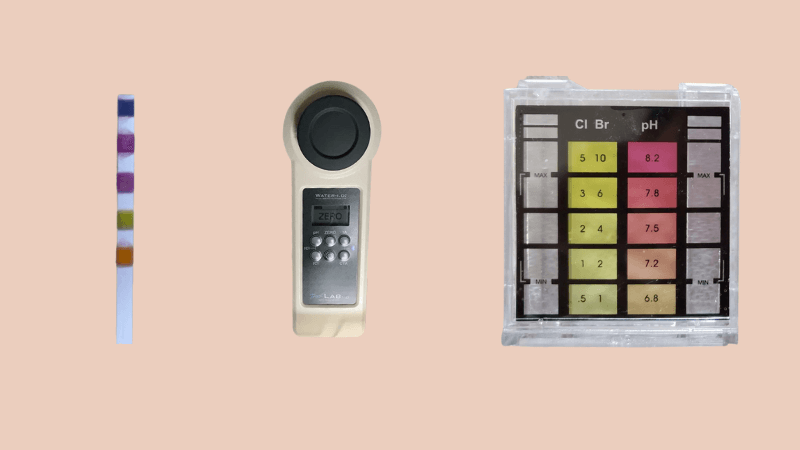
Combined chlorine levels should be less than 0.2 ppm, whereas the free chlorine should be between 1.0 to 3.0 ppm.
More shock will be required if the levels are not where they should be.
When Not To Use Calcium Hypochlorite Shock
Cal-hypo is the most popular and best shock, and rightly so because of its potent multi-functionality and affordability.
But there are a few conditions where you should not use cal-hypo shock such as:
1. High Calcium Concentration in Pool
If your pool is already suffering from high calcium levels, then using the cal-hypo shock will worsen the problem.
Cal-hypo sock will add 0.8 ppm of calcium for raising 1ppm of free chlorine.
Ideal calcium levels in a pool are 200 to 400ppm, if they go above that, then your pool might become cloudy, and scales will start forming in the pool.
Scale formation can also damage your pool equipment permanently.
2. Not Generally Recommend for Saltwater Pools
Salt pool are very prone to scale and plague formation and using cal-hypo shock in them can easily lead to such problems.
Therefore it is advised to use dichlor shock in case of saltwater pools. You can use cal-hypo shock in a saltwater pool for emergencies like algal growth, but it should not be used regularly.
3. High pH Problem
Calcium hypochlorite has basic pH of 12 due to the presence of calcium base. If your pool is susceptible to higher pH, then you should look for other alternatives.
Otherwise, after shocking, you need to lower the pH and balance other chemicals.
Things to Consider While Using Calcium Hypochlorite
We get it that calcium hypochlorite is the best pool shock available for most of your pool needs. It is relatively stable if stored in a cool and dark place and can stay active for years.
But there are a few precautions you need to take while handling cal-hypo.
- It can easily react with moisture and make chlorine gas, and become less active. Store it in a dry place.
- Highly flammable in the presence of heat and can react with organic matter to produce heat and can cause an explosion. Keep away from wood and petroleum products.
- Use protective gear while using cal-hypo, and DO NOT mix with other pool chemicals as it can cause explosions.
Best Time to Use Calcium Hypochlorite Shock
Cal-hypo contains unstabilized chlorine, which that means in the presence of the sun it will lose almost all of its active chlorine in a few hours.
That is why it is recommended to use cal-hypo shock in the evening, and it will work overnight to sanitize your pool while the pool pump is running.
By morning your chlorine levels will be down, and you can use your pool after testing.
On average, it takes 6 to 12 hours for chlorine levels to go down after shocking the pool, so you should at least wait that much time to enter the pool.
Calcium Hypochlorite Shock Will Solve Most of Your Pool Problems
Cal-hypo is the best shock that I can vouch for solving a majority of your pool problems like algae growth, high chloramines, or chlorine demand.
Add this cheap beast to your arsenal, and you will win most of the time.
Just make sure that you are using it at night to protect it from UV rays. If calcium or pH levels are already high in your pool water, you need to look for other shock alternatives like dichlor shock.
FAQs
Here are a few frequently asked questions.
Calcium hypochlorite vs Sodium hypochlorite
Both are chlorine-based products where cal-hypo comes in granular form, and sodium hypo comes in liquid form.
Sodium hypochlorite, also known as household bleach, has a lesser percentage (<15%) of chlorine compared to cal-hypo, thus is not the preferred choice for shocking the pool.
But in case of high calcium levels in the pool, sodium hypochlorite can be a good alternative.
Is calcium hypochlorite the same as shock?
Calcium hypochlorite can be used for shocking, and it is one of the best pool shock but it can also be used for regular chlorine upkeep of the pool. In fact, it is used for the sanitation of drinking water all over the world.
How long does it take calcium hypochlorite to dissolve?
Cal-hypo can be a little tougher to dissolve in water. You need to pre-dissolve it in a bucket before adding it to the pool. It may take 30 seconds to a few minutes to dissolve. In colder water, it will take longer, so try to pre-dissolve in lukewarm water.
Does Shocking a pool with cal-hypo raise pH?
Yes, cal-hypo shock is basic in nature, with a pH of 12. When you add it to the water, it will slightly increase the pH of the water. That is why it is important to check pH levels after shock so that everything is in balance.

